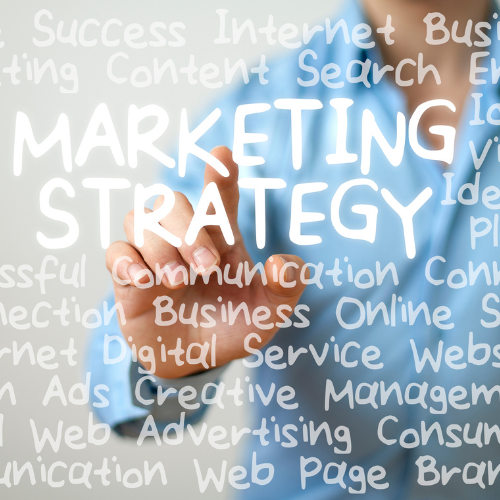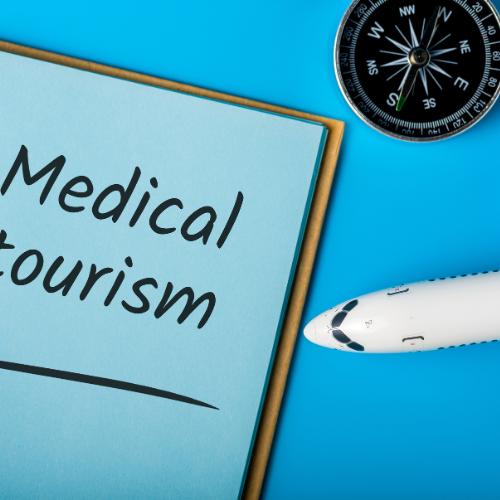Evaluating the Success of Your Medical Tourism Marketing Strategy
Medical tourism is the growing trend of going to various nations or states the importance lies in obtaining medical, dental, and surgical therapy.
The importance of effective medical tourism marketing strategies cannot be understated in this competitive sector.
A successful marketing strategy for medical tourism not only attracts potential patients but also establishes a trusted brand image.
Key components of these strategies often include understanding the target audience, creating engaging content, leveraging digital marketing channels, and building partnerships with key stakeholders in the healthcare sector.
Proper execution of these medical tourism marketing strategies is paramount to capturing the attention of prospective patients and ultimately driving the success of businesses in this niche.
Understanding Your Target Market
Identifying and understanding the target demographic is crucial in the realm of medical tourism.
This knowledge enables the creation of a bespoke marketing strategy for medical tourism, which caters to the unique needs, preferences, and expectations of specific patient groups.
For instance, some patients may prioritize the cost of procedures, while others are more concerned about the quality of care or the reputation of the healthcare providers.
Tailoring the marketing strategy for medical tourism to specific groups enhances its effectiveness in numerous ways. By offering personalized experiences and services, healthcare providers can differentiate themselves in a competitive market.
This personalized approach also fosters trust, as patients feel understood and valued, thereby increasing patient loyalty and satisfaction. Through a targeted marketing strategy, medical tourism providers can also maximize their marketing efficiency by reaching out to the right people at the right time, with the right message.
 Establishing a Robust Digital Footprint – Search engine optimization and Pay-Per-Click
Establishing a Robust Digital Footprint – Search engine optimization and Pay-Per-Click
Digital platforms play a pivotal role in medical tourism marketing strategies. These strategies rely heavily on website optimization, an essential component to ensure visibility and accessibility of the medical tourism offerings.
An optimized, user-friendly, and informative website steers potential patients towards making informed decisions regarding their medical tourism plans.
Social media marketing is another key component of medical tourism marketing strategies. Platforms like Facebook, Instagram, and LinkedIn serve as virtual hubs, enabling direct interacting and involving with prospective global patients.
They offer a space to showcase success stories, medical advancements, and customer testimonials, thereby building trust and credibility.
Further, online advertising such as pay-per-click (PPC) campaigns, display ads, and sponsored content plays a significant role in boosting the outreach of medical tourism marketing strategies.
They provide targeted exposure, ensuring the right demographic is aware of the medical tourism options available. Thus, digital platforms are instrumental in shaping successful medical tourism marketing strategies.

In addition to digital marketing, traditional marketing techniques also play a vital role in promoting medical tourism.
This includes collaborations with travel agencies, airlines, and hotels to offer packaged deals that cater to the needs of medical tourists. Partnering with local embassies and consulates can also help in reaching out to potential patients.
Moreover, hosting seminars, workshops, and conferences related to medical tourism can aid in the promotion of services and establish credibility within the industry.
Digital platforms have a profound impact on medical tourism marketing strategies, boosting visibility, engaging potential customers.
A crucial component of these strategies is website optimization. A well-designed, user-friendly website can significantly improve the visibility of medical tourism providers.
Social media marketing forms another integral part of medical tourism marketing strategies. Through platforms like Facebook, Twitter, and Instagram, providers can engage directly with potential customers, addressing their concerns, answering their queries, and building trust.
Online advertising, including PPC and display ads, also plays a significant role in medical tourism marketing strategies.
These targeted ads reach potential customers precisely when they’re looking for related services, thereby increasing the chances of conversion.
By adeptly leveraging these digital platforms, medical tourism providers can effectively boost their reach, reputation, and revenue.
The advent of digital platforms has revolutionized medical tourism marketing strategies. A well-optimized website stands as a cornerstone in this new-age marketing strategy, providing a platform to showcase medical competencies, patient testimonials, and a wide range of services offered.
In addition, social media marketing plays an instrumental role in enhancing the extent and scope of medical tourism providers’ visibility and reach, allowing real-time interaction with potential clients. Moreover, online advertising through pay-per-click campaigns and search engine optimization further strengthens medical tourism marketing strategies.
These digital platforms collectively constitute an integrative, efficient, and cost-effective marketing strategy for medical tourism, reinforcing the industry’s global presence and reach.
Medical tourism providers are now more focused on expanding their reach and diversifying their client base. One effective approach in this regard is through strategic partnerships with travel agencies, airlines, and other medical facilities.
By collaborating with these entities, medical tourism providers can tap into their established customer base and attract potential clients who may not have considered medical tourism as an option before.
Understanding Google Ads for Medical Tourism
Google Ads operates on a pay-per-click (PPC) model, where advertisers bid on keywords relevant to their services. When a user searches for these keywords, the ads appear at the top of Google search results, providing immediate visibility. This model is particularly effective for medical tourism, where specific treatments, destinations, and healthcare facilities are often the focus of search querie
Best Strategies for Leveraging Google Ads in Medical Tourism Business
Keyword Research and Selection.
The foundation of a successful Google Ads campaign lies in thorough keyword research. For medical tourism, this involves identifying terms that potential patients might use when searching for medical treatments abroad. This includes specific procedures, destination countries, and healthcare terms. Utilizing long-tail keywords – more specific, less common phrases – can be particularly effective, as they often have lower competition and higher conversion rates.
Creating Compelling Ad Copy.
The ad copy should be concise, engaging, and informative, clearly stating what makes your medical tourism service unique. Include key selling points like advanced medical technology, renowned specialists, or cost-effectiveness. A strong call-to-action (CTA) is essential, encouraging potential patients to learn more or get in touch.
Landing Page Optimization.
The effectiveness of a Google Ads campaign is not just about the ad itself, but also where it leads. Landing pages should be tailored to the specific audience and ad content, providing detailed information about the services offered. They should be easy to navigate, mobile-friendly, and include clear calls-to-action, such as contact forms or appointment booking options.
Targeting and Localization.
Targeting capabilities in Google Ads allow for ads to be shown to users in specific locations, languages, or even using specific devices. For medical tourism, this means you can target ads to regions where there is a high demand for overseas medical treatments. Localization goes beyond translation; it involves adapting the content to reflect local cultural nuances and healthcare needs.
Use of Ad Extensions.
Ad extensions expand your advertisement, offering additional information and ways to contact your business. Extensions can include additional links to specific pages on your website, contact information, or even location details. They enhance the visibility of your ad and provide more avenues for potential patients to engage with your service.
Monitoring and Adjusting Campaigns.
One of the key strengths of Google Ads is the ability to monitor performance in real-time. Regularly reviewing key metrics such as click-through rates, conversion rates, and the cost per acquisition is essential. This data allows for informed adjustments to be made to campaigns, whether it’s changing keywords, ad copy, or budget allocation.
Compliance and Sensitivity.
In the medical field, it’s crucial to adhere to advertising regulations and ethical standards. Ensure that your ads and landing pages are compliant with healthcare advertising guidelines and sensitive to the needs and concerns of potential patients.
Analyzing Marketing Efforts and ROI
The effectiveness of medical tourism marketing strategies can be determined through a thorough analysis of various factors.
Paramount among these is the Return on Investment (ROI), which compares the revenue generated through these marketing efforts against the costs involved.
A high ROI shows that the medical tourism marketing strategies are yielding profit and hence are effective.
Another key metric is the patient acquisition cost. In the context of medical tourism marketing strategies, this refers to the amount spent to attract each new patient.
By keeping track of these costs and comparing them with the patients’ lifetime value, organizations can evaluate the effectiveness of their marketing initiatives.
Less cost for each new patient acquired means that the marketing strategies are efficient.
In essence, to track the effectiveness of the medical tourism marketing strategies, organizations need to focus on metrics such as ROI and patient acquisition costs.
These tools provide valuable insights into the cost-effectiveness of marketing efforts, offering guidance for future strategies in the competitive field of medical tourism.
To develop an effective marketing plan for medical tourism, organizations must first have a clear understanding of their target audience.
This includes identifying the specific demographic and psychographic characteristics of potential patients, such as age, income, interests, and motivations for seeking medical treatment abroad.
With this information in hand, organizations can tailor their marketing messages and channels to effectively reach and engage their target audience.

Partnerships and Networking in Medical tourism business
Partnerships and networking are fundamental elements of any successful marketing strategy for medical tourismEngaging in partnerships with fellow healthcare providers and tourist agencies may greatly enhance the scope and efficacy of your promotional endeavors.
These alliances provide opportunities for shared marketing initiatives, referrals, and expanded services. Moreover, such partnerships enhance the overall package you offer to potential medical tourists, ensuring they receive not only top-tier healthcare but also a smooth, enjoyable travel experience.
This synergy of services underscores the power of a well-rounded marketing strategy for medical tourism.
By leveraging these partnerships, your organization can position itself as a comprehensive solution provider in the competitive medical tourism market.
Social Media Medical Tourism Marketing Strategies
Social media platforms have become a key component of marketing strategies in all industries, and medical tourism is no exception. With the majority of people actively using social media, it has become an essential medium to reach potential medical tourists.
Each platform offers unique opportunities for marketing your services, such as showcasing patient testimonials, sharing educational content about procedures and destinations, and promoting special offers.
Additionally, social media allows for direct engagement and communication with potential clients, increasing trust and building relationships
Social media channels offer a multitude of benefits for the medical tourism sector, including:
Extensive Global Exposure.
These platforms provide an opportunity to reach a wide and diverse international audience, significantly enhancing the visibility of medical tourism services.
Precision Marketing.
With social media’s advanced targeting capabilities, medical tourism entities can tailor their advertising efforts to connect with specific groups likely interested in their offerings.
Budget-Friendly Promotional Strategies.
In comparison to traditional advertising avenues, social media marketing often requires a lower investment while yielding higher returns, making it a preferred choice for budget-conscious medical tourism operators.
Direct Patient Interaction and Trust Development.
Social media facilitates immediate engagement with prospective patients, allowing for the dissemination of information, response to queries, and fostering of trust through active participation.
Display of Patient Experiences and Endorsements.
Showcasing narratives and endorsements from patients on social media can significantly enhance credibility and demonstrate the caliber of medical services provided.
Instantaneous Communication.
The ability to communicate updates and information in real-time on social media is essential for keeping potential patients informed about the latest treatments, advancements, and health trends.
Collaborative Opportunities and Networking.
Social media is an effective tool for establishing connections with other entities in the medical tourism industry, such as healthcare facilities, travel agencies, and related businesses, leading to potential referrals and joint ventures.
Dissemination of Informative Content.
Providers can utilize social media to distribute educational material about their services, medical procedures, and destination insights, aiding in attracting and informing potential patients.
Feedback Collection and Perception Analysis.
Social media serves as a platform for gathering public feedback and understanding patient needs and preferences, enabling service adjustments and improvements.
Engaging Multimedia Use.
The employment of videos, images, and interactive media on social media can vividly showcase facilities, destinations, and procedures, making the content more appealing and easy to digest.
Enhanced Online Visibility.
An active presence on social media can boost search engine rankings, simplifying the process for potential patients to discover medical tourism services online.
Community Formation.
Social media allows for the creation of forums where former, current, and prospective patients can exchange experiences, advice, and support, building a communal environment around the medical tourism provider.
Adapting to Market Trends and Patient Needs
Adapting to market trends and patient needs is an essential part of successful medical tourism marketing strategies. It’s crucial that these strategies remain flexible, ready to adapt to the shifting landscape of global healthcare demands. By monitoring market trends, healthcare providers can anticipate changes in patient needs and adjust their strategies accordingly.
This continuous adaptation not only ensures the relevancy of the medical tourism marketing strategies, but also enhances the overall patient experience, thereby promoting patient loyalty and driving business growth.
It’s clear, then, that an adaptable and patient-centered approach is key to effective marketing in the realm of medical tourism.
One effective marketing strategy for medical tourism is to focus on the unique advantages and offerings of a particular healthcare destination.
Possible factors to emphasize are the medical facilities’ advanced competence and technology, the cost-effectiveness of treatments relative to other nations, and the potential for patients to integrate their treatment with a holiday.
In conclusion, the implementation of effective medical tourism marketing strategies is critical for the success and growth of this industry.
From identifying target demographics to developing unique selling propositions, every aspect of the marketing strategy for medical tourism is paramount. Given the increasing competition in this sphere, it’s necessary to constantly adapt and innovate these strategies to meet the dynamic needs of global healthcare seekers.
Some potential strategies for medical tourism marketing include leveraging social media to expand one’s reach to a broader demographic, partnering with travel agencies to offer bundled packages, and collaborating with healthcare providers in destination countries to establish a strong network.
Optimizing Your Medical Tourism Marketing Strategy with Webugol
Webugol is a team of highly skilled professionals in various areas of digital marketing.
Our many years of experience include working with the healthcare and wellness industry. Our portfolio of projects will surprise you and convince you that we are pros.
Therefore, if you are thinking of promoting your medical tourism services, Webugol is your choice to succeed!


